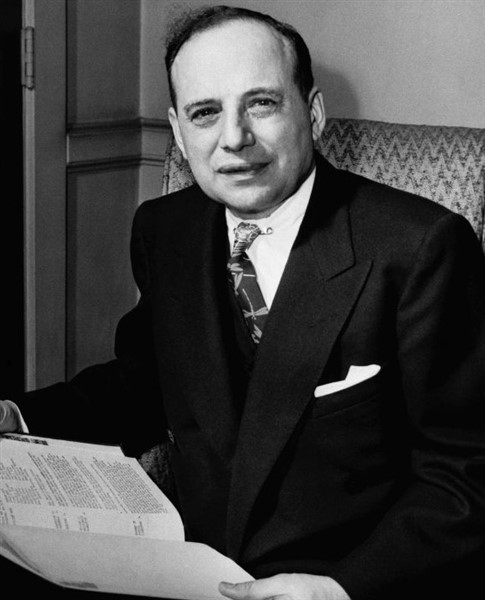Benjamin Graham activist investor. That’s not a term we often hear. Usually Ben Graham is referred to as “The Father of Value Investing.” He’s the man who coined the term “margin of safety” — minimizing risk and maximizing profits by buying stocks at deep discounts to intrinsic value. Warren Buffett became the third richest man on the planet applying Graham’s concepts, and calls Ben Graham his mentor, one of the people most responsible for his success.
But Benjamin Graham the activist investor? We usually think of corporate activists as Carl Icahn types — ultra aggressive investors who coerce intransigent management into making changes. We may envision the British-born Graham as the scholarly type, more at home in the business library than the boardroom. Indeed he was Buffett’s professor at the Columbia Business School.
However, Ben Graham was the first corporate activist.
Northern Pipeline, then trading at $65 per share, and paying a $6 per share dividend, was holding $95 in liquid bond assets for each share outstanding.
In 1926, while sifting through volumes of documents at the Interstate Commerce Commission library, (seriously, pre-internet you had to really work to find information), Graham came upon something interesting. It was a report that showed the balance sheet of Northern Pipeline Company, an obscure spin-off from Standard Oil a decade earlier. Northern Pipeline had major holdings of high-grade bonds that it was not reporting in its public statements. To his astonishment, the company, then trading at $65 per share, and paying a $6 per share dividend, was holding $95 in liquid bond assets for each share outstanding.
Graham realized that Northern Pipeline’s operations did not require the bond investments. The company could pay a large one-time dividend to its shareholders, and continue operations as before. Even after paying out a large distribution, Northern Pipeline would remain profitable and debt-free. This would be a windfall for investors.
What did Graham do? He did what value investors do today when they find hidden value in a publicly traded company: He went back to his office and began accumulating shares of the undervalued stock.
Using his investment partnership he slowly acquired 2,000 shares of the thinly traded stock: About 5% of the company’s 40,000 outstanding shares. This made Graham the largest stockholder of record after the Rockefeller Foundation, which owned about 23 percent of the spun-off pipeline company.
Graham urged Northern Pipeline management to “do the right thing” and return unneeded capital to shareholders.
As chronicled in The Memoirs of the Dean of Wall Street compiled by Seymour Chatman, Graham decided it was time to “persuade Northern Pipeline management to do the right and obvious thing: to return a good part of the unneeded capital to the owners, the stockholders.” Here’s where he ran into problems. And here’s where corporate activism as we know it today was born.
Northern Pipeline management basically told him to take a hike. Saying, “If you don’t approve of our policies, may we suggest that you do what sound investors do under such circumstances, and sell your shares?”
As Graham put it, the elderly gentlemen “proved much more resourceful in finding reasons to hang on to the stockholders’ pile of gold than ways to increase the profits.” Which pretty much summarizes the essential problem activist investors face today.
Undeterred, Graham undertook the very first corporate activist “campaign.” Over the course of two years, he tried various ways to persuade Northern Pipeline management to “do the right thing.” He attended a board meeting (where his attempts to make a statement were refused). He undertook a proxy contest to gain board seats. He personally contacted all shareholders — including the Rockefellers.
In a letter to the Rockefeller Foundations he wrote:
“…The determination of whether capital not needed in the business is to remain there or be withdrawn, should be made in the first instance by the owners of the capital rather than by those administering it.”
In the end, after the two year activist campaign, Graham won: The company’s shareholders were 70% richer for his efforts.
After considerable sweat and aggravation, $70 per share was eventually distributed to shareholders, and the total value of the new Northern Pipeline stock plus the cash returned ultimately reached a total of more than $110 per old share. The company’s shareholders were nearly 70% richer than when Graham first discovered Northern Pipeline’s hidden value.
Today’s value investors aren’t likely to discover stocks with massive secret bond holdings. Values like those found in Graham’s day are rare in the 21st century world of ubiquitous information. But those doing the work still find stocks that trade significantly below intrinsic value with a large margin of safety. Leading corporate activists like Icahn, Starboard Value, Elliott Management and Cannell Capital — to name just a few — continue to find bargains and compel management to close the gap between share price and intrinsic value. They use the playbook first written by Benjamin Graham activist investor.
Disclaimer:
Do not construe anything written in this post or this blog in its entirety as a recommendation, research, or an offer to buy or sell any securities. Everything in this blog is meant for educational and informational purposes only. Do your own research before investing and don’t risk more than you can afford to lose. This article expresses my own opinions, and I am not receiving compensation for it (other than from WhaleWisdom). If you buy a book after clicking on one of the above links, I may received an affiliate fee. I do not have a business relationship with any company whose stock is mentioned in this article. I or my associates may hold positions in the stocks discussed.




